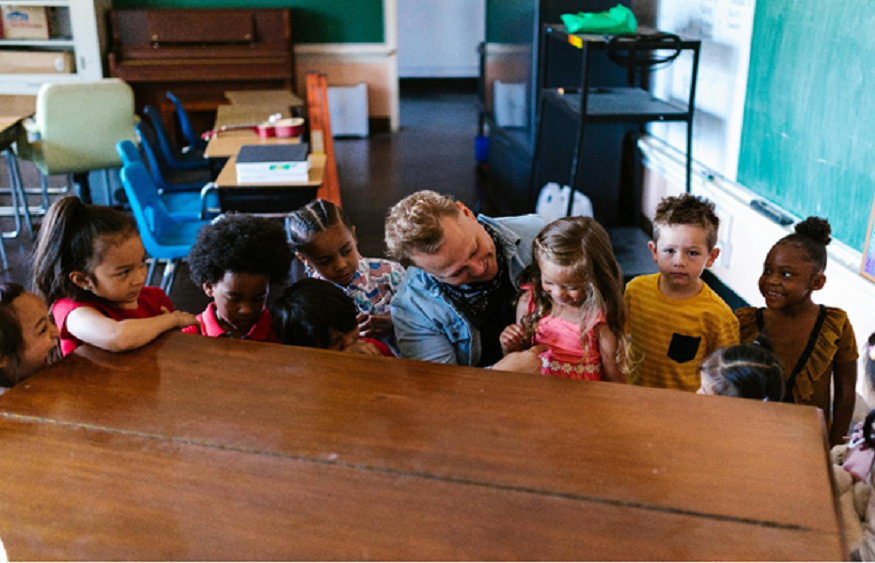Consent is often viewed through the lens of adulthood or adolescence, particularly in the context of personal boundaries or relationships. But the foundational concepts of consent, such as respect, autonomy, and the right to say ‘yes’ or ‘no’, begin much earlier in life. The pre-primary years present a crucial window to lay the groundwork for understanding bodily autonomy, empathy, and mutual respect. With Online Master Degree programs, future educators are now being trained to understand the importance of teaching these social-emotional skills at the earliest stages of development.
What Does Teaching Consent Look Like in Early Childhood?
Teaching consent to pre-primary children doesn’t mean introducing complex adult topics. Rather, it’s about helping children understand:
- Their bodies belong to them.
- They have the right to set boundaries.
- They should seek permission before touching others.
- Saying ‘no’ is okay—and should be respected.
- Listening and responding empathetically to others’ boundaries is essential.
This can be communicated through everyday language, play-based learning, and structured routines. Children learn best through repetition and modeling, which makes early childhood classrooms a natural environment for developing these skills.
Everyday Opportunities to Teach Consent
Consent education is not a separate subject—it’s embedded into daily interactions. Here are ways teachers and caregivers can teach consent meaningfully in a pre-primary setting:
-
Greeting Choices
Instead of requiring a hug or handshake, offer options like, ‘Would you like a high-five, a wave, or just a smile today?’. This gives children autonomy and reinforces that physical contact should always be a choice.
-
Art and Playtime Interactions
If one child wants to use a toy that another is playing with, teach them to ask- ‘Can I play with this when you’re done?’Also, validate the child’s response by saying, ‘It’s okay to say no. Let’s find another toy in the meantime.’ This reinforces turn-taking, patience, and respect for others’ space.
-
Rest Time Routines
Help children communicate their needs during rest time. If you don’t want a blanket, you can say, ‘No, thank you.’ That’s okay.’ Small moments like these help normalize boundaries and self-advocacy.
-
Role Play and Storytelling
Use stories and puppets to introduce scenarios where characters ask for permission or express discomfort.Discuss how others respond, and encourage children to suggest kind, respectful solutions. This builds empathy and active listening.
The Role of Language in Teaching Consent
Language shapes how children understand the world around them. Using respectful, inclusive, and affirming language in the classroom helps model consent-based interactions.
Use Encouraging Phrases Like:
- ‘You can decide if you want a hug.’
- ‘It’s okay to say no if you’re not comfortable.’
- ‘Let’s ask before we touch someone else’s toy or body’
- ‘I heard you say no, and that’s important.’
Avoid Phrases Like:
- ‘Give him a hug to say sorry.’
- ‘Don’t be shy, go sit in her lap.’
- ‘That’s not a nice thing to say when you don’t want to share.’
These dismissive responses can teach children to ignore their feelings or feel guilty for asserting boundaries.
Modeling Consent as Educators
Children learn most effectively through observation. Teachers and caregivers must model consent-based behavior in their interactions, not just with children, but with colleagues and families.
- Ask before touching a child’s belongings or adjusting their clothing.
- Respect children’s physical signals. If a child steps back, avoid moving forward without acknowledgment.
- Use active listening. When a child says “no,” don’t override it unless for immediate safety reasons. Acknowledge it, explain if needed, and validate their feelings.
- Seek permission during routines. Even during diaper changes or hand washing, explain what’s happening and give the child space to respond. This builds trust and predictability.
By doing this consistently, educators create a culture where children feel empowered, safe, and respected.
Teaching Empathy Alongside Consent
Consent education is not just about asserting boundaries—it’s also about understanding and honoring the boundaries of others. Empathy is essential in this situation.
Activities That Promote Empathy:
- Emotion cards or mirrors that help children recognize different facial expressions.
- Circle time discussions about how characters in stories feel and how others respond.
- ‘How would you feel if…?’ games that allow children to consider multiple perspectives.
These practices help children tune in to how their actions affect others, making them more likely to seek permission, apologize meaningfully, and support their peers.
Involving Parents and Caregivers
Parental reinforcement is crucial for consistency in teaching consent. Schools can:
- Host parent workshops or webinars on early consent education.
- Send newsletters or resource guides with language suggestions and activities.
- Encourage respectful communication at home, ‘Would you like a goodnight hug, or a high-five?’
- Share observations from the classroom to celebrate when a child successfully practices consent-related behavior.
Creating alignment between home and school ensures children receive consistent messages, which enhances learning and behavior development.
Benefits of Teaching Consent Early
Teaching consent in pre-primary years offers a wide range of developmental benefits:
- Improved communication skills
- Stronger peer relationships
- Fewer behavioral conflicts
- Greater emotional awareness
- Increased self-confidence and autonomy
- Foundational understanding of safety and respect
Most importantly, it helps create a safer, more inclusive classroom culture where every child feels heard and valued.
Bottom Line
Consent is not a topic to postpone until adolescence—it’s a core value that can and should be cultivated in early childhood. With the growing emphasis on holistic child development, teacher training programs such as a MA in Education with Pre and Primary Teaching are increasingly incorporating modules on social-emotional learning and ethical classroom practices. When consent is taught early, it becomes second nature—not just a lesson, but a way of living and learning together.

